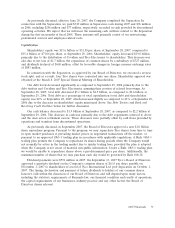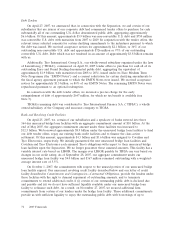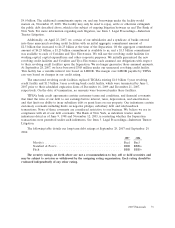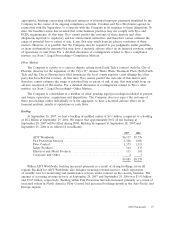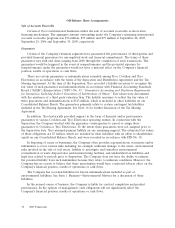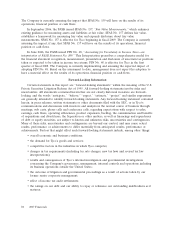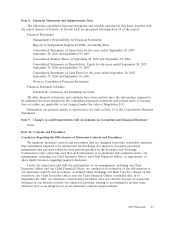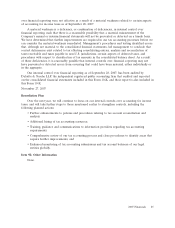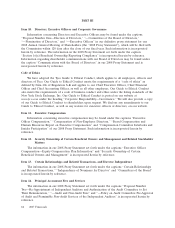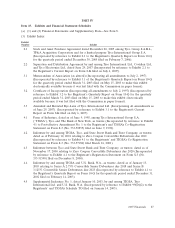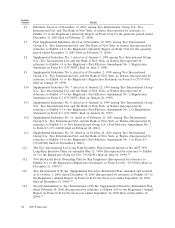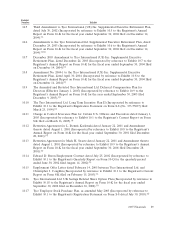ADT 2007 Annual Report Download - page 173
Download and view the complete annual report
Please find page 173 of the 2007 ADT annual report below. You can navigate through the pages in the report by either clicking on the pages listed below, or by using the keyword search tool below to find specific information within the annual report.• our ability to operate within the limitations imposed by financing arrangements and to maintain
our credit ratings;
• interest rate fluctuations and other changes in borrowing costs;
• other capital market conditions, including currency exchange rate fluctuations;
• availability of and fluctuations in the prices of key raw materials, including steel and copper;
• economic and political conditions in international markets, including governmental changes and
restrictions on the ability to transfer capital across borders;
• the ability to achieve cost savings in connection with the Company’s strategic restructuring and
Six Sigma initiatives;
• potential further impairment of our goodwill and/or our long-lived assets;
• the impact of fluctuations in the price of Tyco common shares;
• changes in U.S. and non-U.S. governmental laws and regulations;
• the possible effects on Tyco of future legislation in the United States that may limit or eliminate
potential U.S. tax benefits resulting from Tyco’s incorporation in Bermuda or deny U.S.
government contracts to Tyco based upon its incorporation in Bermuda; and
• the potential distraction costs associated with negative publicity relating to actions of our former
senior corporate management.
Item 7A. Quantitative and Qualitative Disclosures About Market Risk
In the ordinary course of conducting business, we are exposed to certain risks associated with
potential changes in market conditions. These risks include fluctuations in foreign currency exchange
rates, interest rates and commodity prices. Accordingly, we have established a comprehensive risk
management process to monitor, evaluate and manage the principal exposures we assume. We seek to
manage these risks through the use of financial derivative instruments. Our portfolio of derivative
financial instruments may, from time to time, include forward foreign currency exchange contracts,
cross currency swaps, foreign currency options, and interest rate swaps. Derivative financial instruments
related to interest rate sensitivity of debt obligations, intercompany cross border transactions and
anticipated non-functional currency cash flows are used with the goal of mitigating a significant portion
of these exposures when it is cost effective to do so.
We do not execute transactions or utilize derivative financial instruments for trading or speculative
purposes. Further, to reduce the risk that a counterparty will be unable to honor its contractual
obligations to us, we only enter into contracts with counterparties having at least an A/A2 long-term
debt rating. These counterparties are generally financial institutions and there is no significant
concentration of exposure with any one party.
During fiscal year 2007, the Company elected to change its presentation of market risk information
from a tabular format to a disclosure based on the results of sensitivity analysis. Management believes
this method of presentation provides more useful information for assessing the Company’s overall
exposure to market risks. The results of our sensitivity analysis represent an estimate of reasonably
possible outcomes based on hypothetical market conditions and are not necessarily indicative of actual
results. Although, there were no material changes in our primary risk exposures and risk management
activities, our level of exposure decreased across all risk categories as a result of the spin-off of our
Healthcare and Electronics businesses.
2007 Financials 81


